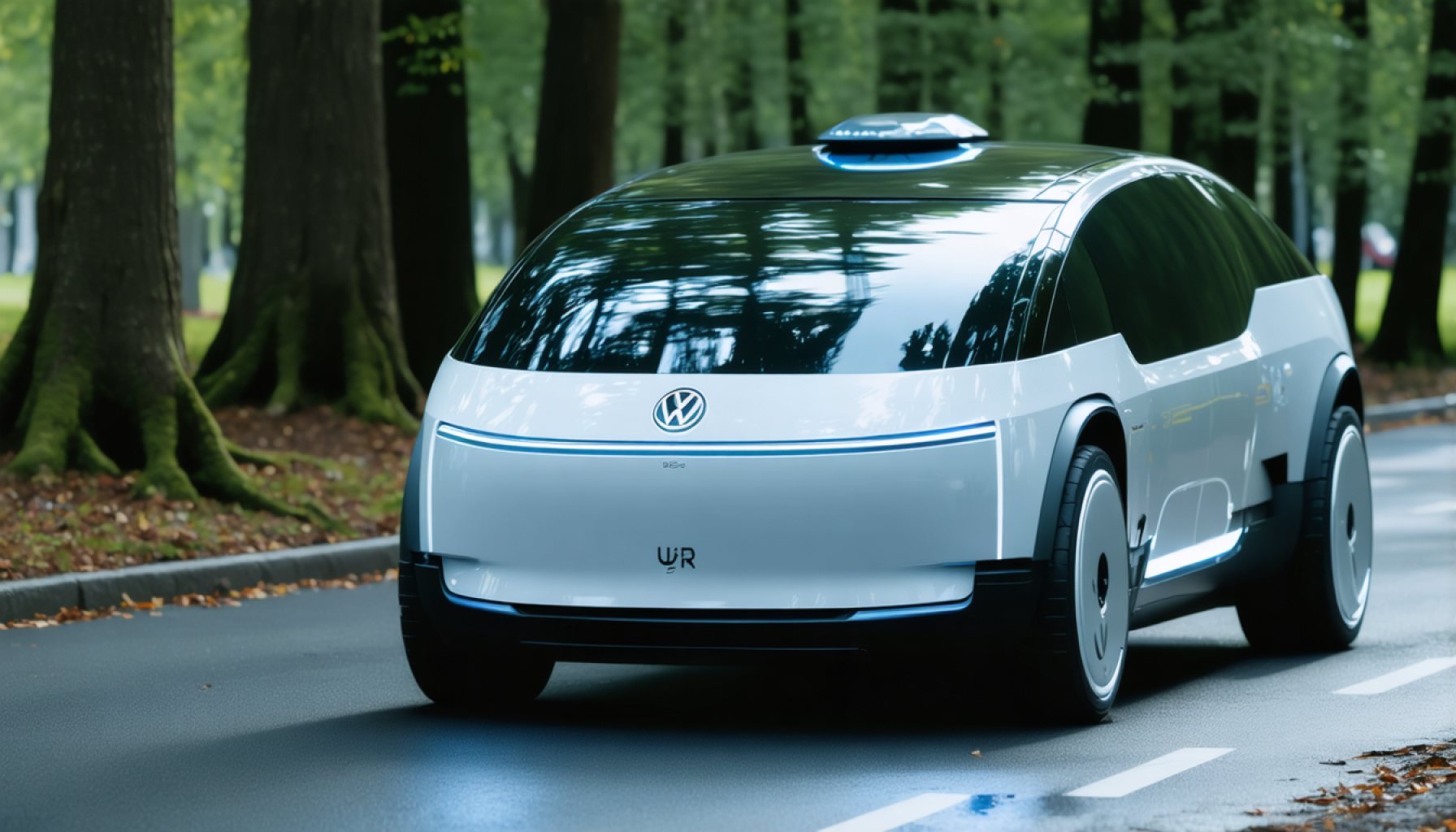- Uber partners with Volkswagen to introduce autonomous electric vehicles through the iconic ID. Buzz.
- The alliance aims to revolutionize urban transportation over the next decade, starting with testing later this year.
- Los Angeles will see the first deployment of autonomous ID. Buzz vehicles by 2026.
- This project underscores Uber’s commitment to expanding its autonomous offerings and integrating advanced technology.
- The ID. Buzz combines nostalgia with modern innovation, priced at $59,995, and emphasizes environmental sustainability.
- Uber’s initiative with Volkswagen represents a transformative step toward a zero-emission future and seamless urban transit.
- The ride-hailing landscape is evolving as Uber and Volkswagen lead the charge into a new era of mobility.
Navigating the bustling tapestry of urban streets, Uber is paving the way for an electric, autonomous future with an ambitious new partnership. In a strategic alliance with Volkswagen, Uber is poised to redefine urban mobility by deploying a fleet of the iconic Volkswagen ID. Buzz vehicles, reimagined with cutting-edge autonomous technology. This visionary project will unfold over the next decade, setting the stage for a seismic shift in how we perceive and experience transportation.
Picture the scene: a sleek, modern version of the beloved VW Microbus hums quietly through the city, guided not by human hands, but by the meticulously engineered software of Volkswagen AG’s MOIA division. The ID. Buzz, with its rich legacy, is now infused with new life as it embraces the electric era—a transformation that doesn’t just nod to nostalgia but confidently strides toward innovation.
Testing these autonomous marvels begins later this year under vigilant human supervision, ensuring that technology and safety march in lockstep. If everything proceeds as planned, Los Angeles will welcome the first autonomous ID. Buzz vehicles onto its streets by the close of 2026, where they are expected to become as integral to the urban landscape as the palm trees and ocean breezes.
While Uber has been synonymous with innovation, integrating Waymo’s technology in cities like San Francisco, Phoenix, and Austin, this latest partnership signifies a bold leap forward. It underscores Uber’s dedication to expanding its autonomous offerings, not merely increasing operations but transforming the very fabric of urban travel.
The modern ID. Buzz captures the spirit of adventure intrinsic to its predecessor yet aligns with current environmental imperatives. Its $59,995 price tag underscores that cutting-edge technology and classic design can coexist without compromise. For Uber and Volkswagen, these vehicles are not simply cars; they are vessels of change, accelerating towards a zero-emission future.
Uber’s latest endeavors signal more than a business decision—they mark a commitment to ushering in a new era of mobility. As they journey towards this electric horizon, a future of seamless, autonomous transit beckons, with Uber and Volkswagen leading the charge. The prospect of stepping into a robotaxi, immersed in the charm of an iconic legacy infused with modern technology, holds the promise of an electrifying ride into the future. The ride-hailing revolution is well underway, and it’s steering us into uncharted yet exhilarating territory where the past and present harmoniously converge.
Uber’s Bold Move: Reshaping Urban Mobility with Autonomous VW ID. Buzz
Exploring the Game-Changing Uber and Volkswagen Partnership
Uber’s partnership with Volkswagen to deploy autonomous electric vehicles signifies a colossal shift in urban mobility. This collaboration aims to meld nostalgia with innovation, establishing the Volkswagen ID. Buzz as a testament to sustainable and autonomous transport.
Expanded Insights
1. Technical Specifications and Features
– Volkswagen ID. Buzz: Embodying a classic design, the ID. Buzz integrates state-of-the-art electric technology, offering a range expected to satisfy urban travel needs efficiently. It features a spacious interior catering to passenger comfort and the integration of advanced autonomous systems facilitated by Volkswagen’s MOIA division.
2. Safety and Supervision
– Testing Phases: Before public deployment, these vehicles will undergo rigorous testing under human supervision. This phased approach ensures that autonomous technology aligns harmoniously with safety protocols.
3. Autonomous Technological Advancements
– AI and Machine Learning: The deployment relies heavily on AI advancements that focus on real-time data processing, obstacle detection, and decision-making algorithms, enhancing safety and efficiency.
Industry Trends and Market Forecast
1. Growth of Autonomous Vehicles
– Market Outlook: According to Allied Market Research, the autonomous vehicle market is projected to reach $556 billion by 2026, fueled by advances in AI, changes in consumer preference towards shared transport, and stringent emissions regulations.
2. Role in Ride-Hailing Evolution
– Uber’s Strategy: Uber is capitalizing on the shift towards electric, autonomous vehicles, aiming to transform its fleet completely by 2030 in major global cities, aligning with global sustainability goals.
Real-World Applications and Use Cases
– Urban Efficiency: Autonomous ID. Buzz vehicles could reduce urban congestion and lower emissions, contributing significantly to city-wide environmental sustainability targets.
– Accessible Transportation: Providing greater mobility for individuals with disabilities or those who cannot drive, reshaping the inclusivity of urban transit systems.
Controversies and Limitations
1. Regulatory Challenges
– Autonomous vehicles face complex regulatory environments. Differences in state and federal laws across the U.S. could impact deployment timelines and operational regions.
2. Technological Barriers
– Edge Cases: Handling unexpected situations, such as inclement weather or complex traffic scenarios, remains a challenge for autonomous systems.
Quick Tips for Readers and Stakeholders
1. Stay Informed: Follow developments in autonomous technology to understand its impact on urban landscapes and personal mobility.
2. Consider Environmental Benefits: Opt for ride-hailing services that prioritize electric vehicles to contribute to lower urban emissions.
3. Engage with Policy Discussions: Public involvement in regulatory discussions can shape the future of autonomous vehicle laws favorably.
Conclusion
Uber and Volkswagen’s collaboration on the autonomous ID. Buzz is a beacon of the future in sustainable and autonomous urban travel. By resolving regulatory and technological challenges, they could dramatically alter global transportation landscapes. This partnership not only recalls the nostalgic charm of the VW Microbus but also reinvents it for a new, eco-friendly era.
For more information about the advancements in autonomous driving technology, visit Uber’s website.
